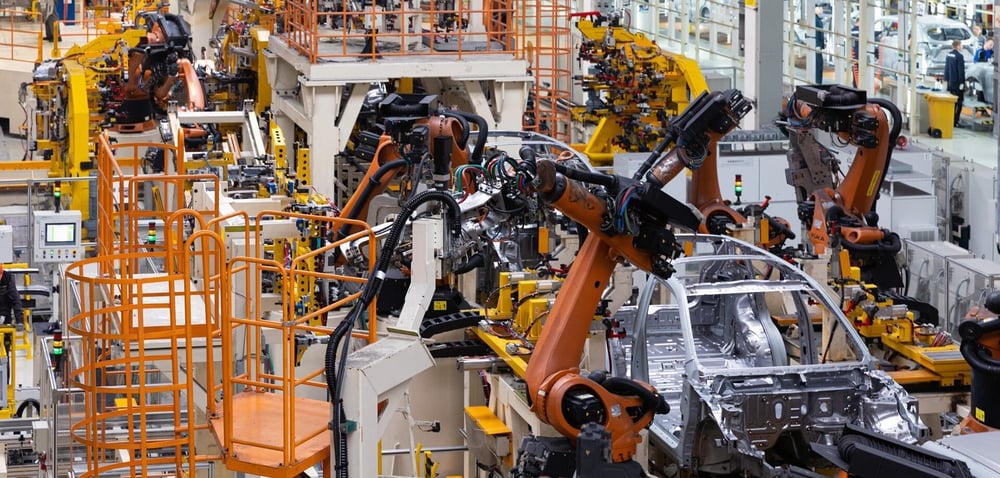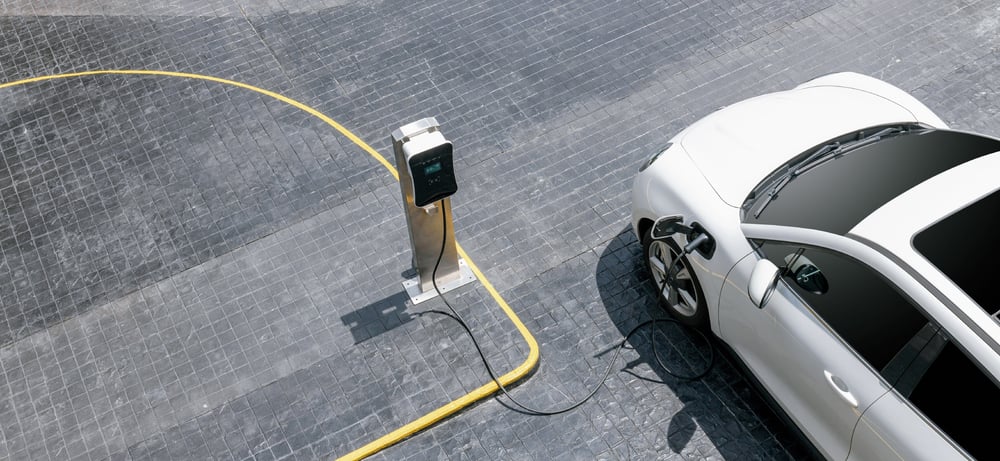Massachusetts Electric Vehicle Rebate Increased to $3,500
The Massachusetts Offers Rebates for Electric Vehicles Program (MOR-EV Program) has increased electric vehicle...
andLillian Zhu
andLillian Zhu
On March 26, 2025, President Trump announced 25% tariffs on imports of both cars and car parts, throwing global supply chains into chaos. On April 2, he announced additional import tariffs, at different levels for different countries. The situation is evolving rapidly. In this blog, we'll cover what this all means for electric vehicle (EV) adoption.
According to the March 26th White House Fact Sheet,
As a reminder, the US imposed separate 25% tariffs on all steel and aluminum imports on March 12, 2025, which also impact the car market. A full list of tariffs (both implemented and threatened) and counter-tariffs from other countries can be found here.
First, here's a quick lesson in international supply chains. The car you drive starts its life as raw materials in the ground, which are extracted, processed, and sent to component suppliers. (Steel and aluminum are particularly key in the auto market, and the United States imports about 25% of its steel and aluminum, with Canada and Mexico making up the bulk.) From there, component suppliers create the parts, such as transmissions and batteries, and pass them off to assembly plants. At this stage, parts can cross borders many times before ending up at assembly. At the assembly plant, parts are put together, and the car is built. Cars then need to travel from assembly plants to dealerships, where they will finally be ready to be sold.

All of this means that, as CNN put it, “there is no such thing as an all-American car.”
For example, the Ford Mustang Mach-E sources 18% of its parts from Mexico and 51% from China, with only 26% coming from the US or Canada, not to mention having a final assembly in Mexico. The Chevy Blazer EV and Equinox EV share a similar story, with 18% of their parts coming from China and a final assembly in Mexico. If you are interested in how the tariffs may affect a specific vehicle, a full list of part sourcing and manufacturing locations can be found here.
Manufacturing Supply Chains
President Trump has stated that part of his motive behind the tariffs is to encourage the American automotive industry to source and build in America. As White House Press Secretary Karoline Leavitt put it, “He told them they should get on it, start investing, start moving, shift production here to the United States of America, where they will pay no tariff. That is the ultimate goal.”
So, are automakers shifting gears to ramp up production in the US? Not really. General Motors CFO Paul Jacobson told investors GM is currently not looking to build new plants due to the volatile and unpredictable nature of the tariffs. In his words, “we can’t be whipsawing the business back and forth.”
Besides, even if automakers were hoping to open new production plants, that takes time. Even reopening previously closed factories takes significant time, as shown by the Stellantis plant in Belvidere, Illinois. An agreement was made to reopen the plant in response to 2023 autoworker strikes, but even with a head start, it won’t be operational until 2027 at the earliest.
Some automakers may strike (or attempt to strike) deals with the Trump administration to avoid tariffs. Hyundai, for example, recently announced a $21 billion investment in the United States (much of which started during the Biden Administration), which prompted President Trump to declare them exempt, but how that would work is entirely unclear.
Prices
In the immediate future, prices may not shift, as dealers have months of stock left on their lots. Once those vehicles start to sell out, prices are estimated to increase – both because tariffs increase the cost of parts and because reductions in supply from reduced manufacturing may increase prices, too. It’s hard to predict by how much, but here are some estimates we found:
Ripple Effects
The price impacts ripple outwards. If higher prices result in lower demand, production could fall, and workers at manufacturing plants could get laid off. An analyst from Cox Automotive expects a 30% fall in production in the United States as higher prices impact manufacturers and consumers. Consequently, this will affect dealerships; they might make fewer sales and, therefore, have to lay off staff. Between manufacturing and sales, 3 million people across the United States work in the automotive industry.
More expensive car parts lead to higher servicing fees, meaning car insurance prices are likely to increase as a result, as well.
In addition, we could see retaliatory tariffs from other countries on American vehicles or auto parts, which would raise the price of American products abroad, likely decreasing demand and, therefore, impacting production and jobs in the US. All of these economic forces interact and will spill over into other parts of the economy through multiplier effects.
The already in-place 25% tariffs on steel and aluminum (which are separate from the car and car part tariffs) affect more than just the cars themselves. Trump’s tariffs have already led to a 20% price hike in transformers, which are critical for all sorts of energy infrastructure – EV chargers, in particular.

Before the tariffs, we already had severe delays in acquiring transformers. Locally, we’ve heard of backlogs for six to nine months for the types of transformers you need for a DC Fast Charger installation. Tariffs aren’t going to help the situation. Wait times for transformer orders placed today can take up to three years, though they vary depending on the exact type of transformer. This hasn’t always been the case; Peter Ferrell, the National Association of Electrical Manufacturers Director of Government Relations, estimated that the wait time was only about four to six weeks five years ago.
With over 80% of the US’s large power transformers coming from imports, tariffs on an already strained industry will only exacerbate the shortage.
These tariffs are going to impact the car market dramatically. We can’t know exactly how, particularly because the news keeps changing on this front. So far, there’s no indication that these tariffs will disproportionately impact EVs, but we will keep our eyes open. Price increases could push EV prices above the price limits for the federal tax credit and make more vehicle models ineligible. But all this could impact the market beyond prices. We’ll have to see how automakers (and policymakers) respond.
The Massachusetts Offers Rebates for Electric Vehicles Program (MOR-EV Program) has increased electric vehicle...
andLillian Zhu
Important update: The new federal tax credit set up by the Inflation Reduction Act means this blogpost is...
andLillian Zhu
Comments